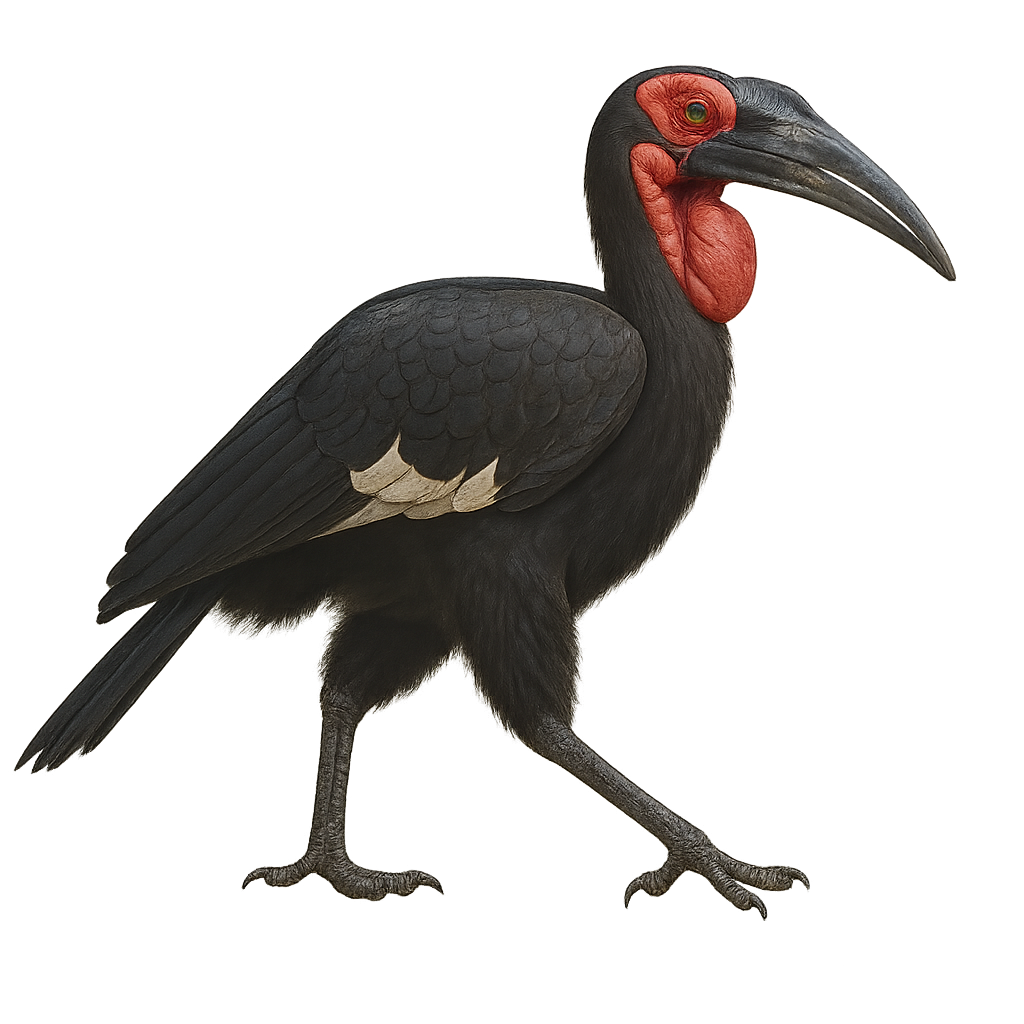Your wildlife photography guide.
Explore the southern ground hornbill in detail, study its behavior, prepare your shots.
Where to observe and photograph the southern ground hornbill in the wild
Learn where and when to spot the southern ground hornbill in the wild, how to identify the species based on distinctive features, and what natural environments it inhabits. The WildlifePhotographer app offers tailored photography tips that reflect the southern ground hornbill’s behavior, helping you capture better wildlife images. Explore the full species profile for key information including description, habitat, active periods, and approach techniques.
Southern Ground Hornbill
Scientific name: Bucorvus leadbeateri

IUCN Status: Vulnerable
Family: BUCORVIDAE
Group: Birds
Sensitivity to human approach: Suspicious
Minimum approach distance: 10 m
Courtship display: October to November
Incubation: 37-41 jours
Hatchings: November to January
Habitat:
Savannas, grasslands, open forests
Activity period :
Primarily active during the day, with peak activity in the morning and late afternoon.
Identification and description:
The Southern Ground Hornbill is an impressive bird, recognizable by its glossy black plumage and vivid red facial skin. It is one of the largest hornbills, measuring up to 1.2 meters in length. This bird is primarily terrestrial, moving in small family groups across the savannas and grasslands of southern Africa. It feeds mainly on insects, small reptiles, and mammals. The Southern Ground Hornbill is known for its longevity, living up to 70 years in captivity. However, it is threatened by habitat loss and the reduction of natural nesting sites.
Recommended lens:
400 mm – adjust based on distance, desired framing (portrait or habitat), and approach conditions.
Photography tips:
To photograph the Southern Ground Hornbill, it is advisable to use a 400mm or longer telephoto lens to capture detailed images without disturbing the bird. Opt for early morning or late afternoon hours to benefit from soft light and avoid harsh shadows. Be patient and discreet, as these birds can be suspicious. Observe their behavior and wait until they are comfortable to get natural shots.
The WildlifePhotographer App is coming soon!
Be the first to explore the best nature spots, track rutting seasons, log your observations, and observe more wildlife.
Already 1 432 wildlife lovers subscribed worldwide

